 , ,  |
Dance for Joy: Confident, Calm, and Compassionate |
1.00 |
This module from Dance for Joy will provide teachers with resources and activities that can be used and modified to support physical, mental, social, and emotional development in young children.
This course covers 5 activities: Tickle the Sky, Tapping, Every Little Cell, We are One, Scoop up the Universe. |
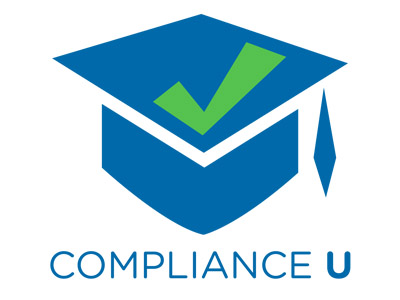 |
Healthy Bodies: Promoting Good Nutrition and Physical Activity in Child Care |
1.00 |
This course will give you a broad overview of how to instill healthy habits at an early age. It will provide you with information about the nutritional needs of children and the benefits and risks associated with physical activity levels. Strategies will be given to use this knowledge in the classroom. |
 |
Child Abuse Prevention and Awareness for Supervisors and Managers |
1.50 |
If a staff member or volunteer in a child-related program approaches his or her supervisor with a case of suspected child abuse the supervisor must know how to handle the situation to ensure the safety of everyone in the program. This course provides supervisors with a wealth of information about how to recognize and prevent child abuse within program walls, and furthermore, the steps to take when a situation of child abuse arises. In addition, you will learn best practices for yourself, your staff and your organization.
|
 |
English Language Learners |
1.00 |
This course will give you a greater understanding of the circumstances under which some English language learners came to the U.S. and the challenges they may face. Strategies for teaching language acquisition skills will be provided, and you will learn the importance of collaborating with families and communities. |
 |
Dyslexia |
1.00 |
This course will provide you with an overview of dyslexia to help you understand what it is all about, the challenges a student with dyslexia faces, and the best ways in which teachers can effectively support students with this disability. |
 |
Understanding Autism in Your Community |
1.00 |
This course is designed to educate communities on how they can work together to be more inclusive and accepting of people with autism. It will give you an overview of the struggles people with autism face and some ways in which communities can make themselves more accessible and autism-friendly. |
 |
Attention-Deficit/Hyperactivity Disorder (ADHD) |
0.50 |
This course covers Attention-Deficit/Hyperactivity Disorder, also known as ADHD. A key discussion point of this course is whether ADHD is the wandering of attention, which is a trait, versus the deficit of attention, which is a disorder. We'll cover topics that include what ADHD is, its characteristics, the signs of ADHD, and possible medications or accommodations. It is just one out of many educational courses we offer. This course will help you develop new knowledge about children and help you better understand your role. |
 |
Autism and Bullying |
0.50 |
This course covers Autism spectrum disorder (ASD) and Bullying. The course will begin by going over what autism is, and then it will continue to teach you about the bullying that may occur along with it, and how you can assist. This content will help you learn more about children with ASD and will help you understand how you might support these children. |
 |
Making Your Home A Safer Place |
0.75 |
This course covers household safety. This includes fire and kitchen safety, emergencies, infant safety, and more. This course will help you learn about the best practices for everyone inside the house, from infants to pets. It is just one of the many health and safety courses we offer. |
 |
Making Educators Partners in Suicide Prevention |
0.75 |
This course covers Making Educators Partners in Suicide Prevention. It is just one of many educational courses we offer. This course will help you develop new knowledge about children and help you better understand your role. This course will give you a broad overview of suicide statistics and the disparities that come with it. It will then give you an understanding of what educational professionals can do to help their students who are at risk and provide you with strategies recommended by the CDC. |
 |
School-Age Health Guidelines to Promote Healthy Eating and Physical Activity |
0.34 |
At the end of this course, participants will be able to define the terms overweight and obesity, know health consequences of childhood obesity, and explain the purpose of CDC’s School Health Guidelines to Promote Healthy Eating and Physical Activity. They will also identify at least two healthy eating and two physical activity policies or practices that can be implemented in schools to address obesity. Participants will also be able to create guidelines to address problems in their area as well as find stakeholders that need to be informed of the guidelines.
|
 |
Professional Learning and Ethical Practice for Teachers |
1.00 |
This course covers what teachers need to know about professional learning and ethical practice. This course will help you develop new knowledge about professional roles and responsibilities as a teacher. It will help you understand what your role as a teacher is regarding certain protocols that you must follow. |
 |
Medication Administration in Child Care |
0.50 |
This course covers Medication Administration in Child Care. It is just one out of many educational courses we offer. This course will help you develop new knowledge about children and help you better understand your role. In this course, you will learn about common medications children may take while under your care and the policies and guidelines for administering them. You will also read about adverse reactions and how to respond in an emergency. You will gain a greater understanding of the importance of safe drug administration. |
 |
Suicide Prevention |
1.25 |
This course covers suicide prevention measures and suicide prevention organizations as well as the disparities found in suicide data.
After completing this course, you will be able to:
Distinguish the disparities in suicide statistics
Identify the risk factors that can lead to suicide
Apply techniques to help prevent suicide
Describe the work that suicide prevention programs are doing |
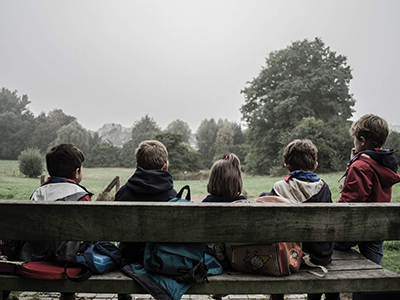 |
Child Abuse Prevention and Awareness |
1.25 |
Unfortunately, child abuse is a prevalent issue in today's world. Child care workers and volunteers, coaches, and others who work with children must be knowledgeable about the topic to ensure children's safety. This course will make you aware of the many issues related to child abuse and help you recognize and prevent child abuse within and outside of program walls. It offers advice about how to respond to a child who divulges abusive information and what to do with this information. As someone who works with children you will learn how to protect the child, your organization, and yourself from accusations of abuse. |
 |
SIDS and Other Sleep-Related Infant Deaths: Keeping Babies Safe |
1.50 |
This course will give participants a brief overview of Sudden Infant Death Syndrome (SIDS) and other sleep-related deaths. Participants will learn about recent research and statistics, the importance of child care providers, AAP SIDS Task Force recommendations, and how to implement polices in child care. |
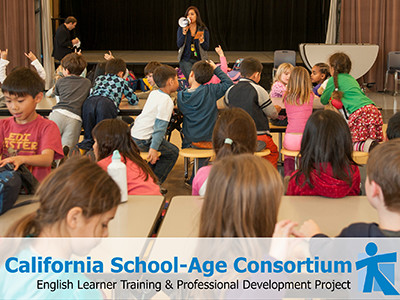 |
English Learner Socio-Emotional Factors and Typologies Review |
0.50 |
This course serves as a compliment to Knowing English Learners, an in-person training offered through CalSAC's English Learner Training and Professional Development Project. This review course is for CalSAC EL Trainers and participants. CalSAC Trainers can use this module as a way to brush up on the Socio-Emotional Factors and English Learner Typologies before conducting a training, and participants can use the module to further their understanding of the Factors and Typologies. |
 |
Understanding the Immigration Process |
1.00 |
This course is designed to provide information about the immigration experience and process children, youth, and their families have gone through to come to the United States. Strategies for supporting the emotional well-being and academic success of immigrant students will be provided. We hope this course will help you understand your immigrant English learners and their families a little better. |
 |
Creating a Safe and Respectful Environment for Our Nation's Children and Youth |
0.75 |
This course will provide you with the knowledge and skills to create safer, more inclusive environments for children. You will learn about the dynamics of bullying, the impact it has on those who are bullied, and strategies for prevention. |
 |
Autism Spectrum Disorder |
1.50 |
This course covers autism spectrum disorder (ASD), focusing on how it is diagnosed, how it presents in the classroom, and school supports. This content will help you increase your knowledge about students with ASD and will help you understand how you might support these students. |
 |
OSTPD - Supporting Attendance through After School Programming |
1.00 |
This training will cover a number of areas regarding how after school programs can support youth attendance in school. By looking at and exploring the connection between after school programming and attendance in school, we see how after school programming supports attendance at school as well as how to coordinate with the school in order to maximize the positive impact of after school on school attendance through collaboration. |
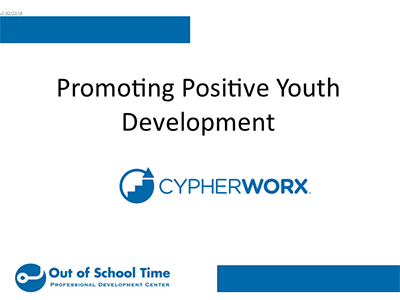 |
OSTPD - Promoting Positive Youth Development |
1.00 |
This training will define Positive Youth Development, benefits of Positive Youth Development and how to implement Positive Youth Development. |
 |
OSTPD - Supporting Alternative Pathways through Service Learning |
1.00 |
This training will cover a number of areas regarding how after school programs can support alternative pathways by using service learning. The course will review what service learning is and provide a solid foundation of this concept. It will then look at the benefits of service learning followed by how service learning supports youth’s alternative pathways. It will conclude with information on how to get started and creating a path to implement service learning in your own program.
|
 |
After School Improvement Series: Outdoor Environments |
0.50 |
The After School Improvement Series: Outdoor Environments course will:
Describe different types of outdoor environments, along with the opportunities and challenges each one offers.
Discuss the role outdoor environments play in encouraging children to be active, while promoting a range of different experiences.
Identify the steps you can take to ensure that the outdoor environment is safe and accessible for all children.
Explore how outdoor environments can be used to extend learning opportunities found in indoor environments.
|
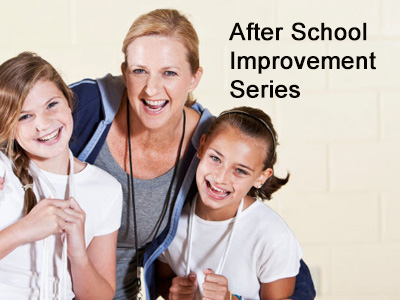 |
After School Improvement Series: Emergency Action Plans |
0.50 |
Like all other early childhood and school-age settings, after school programs need to consider how they prepare for and respond to emergency situations, from natural disasters, like storms, earthquakes, tornados, flash floods, or volcanic eruptions; fires; power outages; missing children; or acts of violence, including active shooter situations. Some emergency situations may require evacuation, while others may initiate a lock down, or shelter-in-place. The best way to prepare for emergency situations is to plan for them. We can do this by considering the kinds of emergency situations we might encounter, and then developing a series of procedures and protocols for responding to them. Your program’s Emergency Action Plan sets out your role and responsibilities should any of these emergencies occur.
|
 ,
, 

























